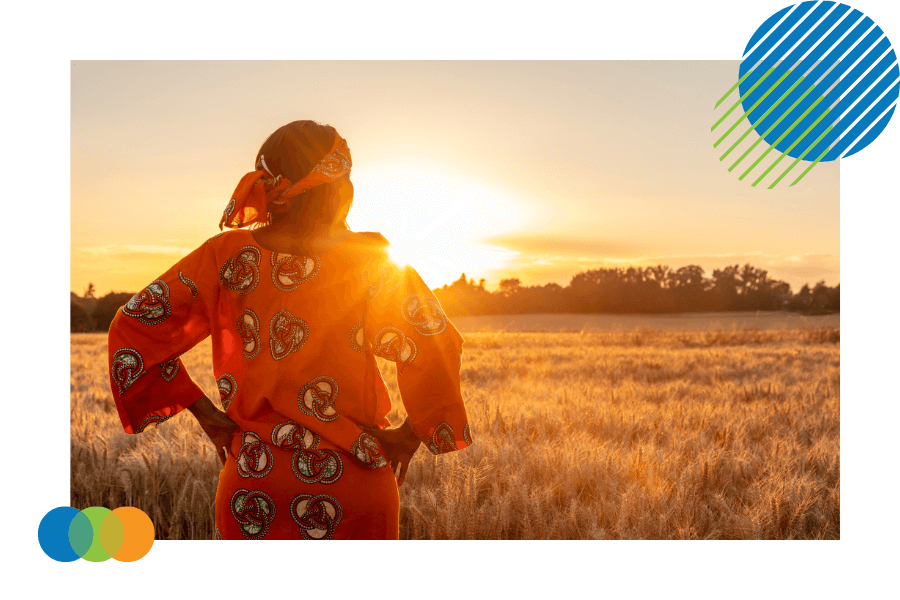 |
Written by Liz McDermott |
The Truth and Reconciliation Commission tells a powerful story through 6,500 witness accounts. Their voices shape how Canada understands Indigenous reconciliation today. This historic effort, backed by a $72 million government commitment, is Canada's largest class-action settlement.
The path to meaningful reconciliation will become more apparent in 2025. This is evident in 94 specific calls to action, each designed to rebuild relationships between Indigenous and non-Indigenous peoples. Organizations, governments, and individuals across Canada are working to find their place in this vital process.
Let's examine what reconciliation means for Indigenous peoples and why it matters deeply in 2025. We'll explore the actions that create change, practical work plans, and ways Canadian workplaces can get involved.
|
This article is made possible by Vubiz’s clients utilizing our Indigenous Reconciliation Awareness online training course to help increase employee awareness about the history of Indigenous people in Canada. |

What Is Indigenous Reconciliation and Why It Matters
The Story Behind Reconciliation
The Truth and Reconciliation Commission (TRC), established in 2008, changed how Canada faces its past. Born from the Indian Residential Schools Settlement Agreement, the TRC set out to document stories and build new bridges between communities.
Reconciliation is like rebuilding a relationship—it takes time, trust, and honest work from both sides. The process brings Indigenous peoples and the Crown together to create new ways of living side by side. At its heart, reconciliation honors Indigenous peoples' original presence and rights while working within Canada's current system.
The Building Blocks of Reconciliation
The TRC laid out clear principles we can all understand:
- Respect for Indigenous Treaty, constitutional, and human rights
- Telling the truth about the past, even when it hurts
- Fixing problems colonialism created
- Making sure everyone has a fair chance to succeed
- Building relationships that last
Why This Work Matter
Reconciliation isn't just about saying sorry. It's about real change. Look at what's been happening: The Government of Canada created the Indigenous Languages Act in 2023 and built the National Council for Reconciliation in 2024. But here's the thing: reconciliation goes deeper than fixing past mistakes. It means recognizing Indigenous sovereignty and getting proper consent before deciding about Indigenous lands and resources. The government now knows it must protect Indigenous cultures and honor treaty rights.
Moving forward takes more than good intentions. We need steady political commitment, trust between communities, and tangible resources. Most importantly, we need everyone, Indigenous and non-Indigenous people, including businesses, to understand these treaties, rights, and histories.
The Path to Indigenous Sovereignty
Sovereignty starts with a simple truth: Indigenous peoples have inherent rights to self-determination. Section 35 of the Constitution Act of 1982 codifies these rights, giving them a legal backbone.
Self-determination and Governance
Here's something worth noting: Indigenous self-government isn't just another department in Canada's system–it stands on its own. Currently, 25 self-government agreements give 43 Indigenous communities more control over their futures. What does this mean in practice? Indigenous governments call the shots on:
- Teaching their children and protecting their culture
- Building stronger communities and economies
- Looking after their lands and resources
- Running their health services
Land Rights and Resource Management
First Nations Communities can now write their own rules about their lands and environment, a transition from the 44 sections of the Indian Act. The government helps with three kinds of funding: money to plan, money to switch over, and money to keep things running.
Economic Independence
Indigenous communities face financial troubles due to old colonial systems and barriers. Economic reconciliation is needed. The National Indigenous Economic Development Board says closing these gaps could boost Canada's GDP by CAD 41.80 billion.
Creating Effective Reconciliation Action Plans
Let's examine the numbers to understand what makes reconciliation work. The Canadian Reconciliation Barometer measures our progress through 13 key markers, asking both Indigenous and non-Indigenous Canadians what they see.
What Makes Plans Work
Good plans don't happen by accident. They need:
- Goals you can measure
- Indigenous voices leading the way
- Real money and resources behind them
- Yearly check-ins to stay honest
- Training that builds true understanding
Keeping Score
The Canadian Reconciliation Barometer shows that awareness increased from 2021 to 2022. Much of this shift happened after people learned about unmarked graves at former residential school sites. But look at the "Personal Equality" scores—they barely move. That tells us where to roll up our sleeves.
Working Together
You can't build bridges alone. Smart organizations understand this, so they're setting up Reconciliation Advisory Councils to light the way. Before anyone starts moving dirt on development projects, they need a clear "yes" from Indigenous communities.
Their advice? Start early and share power with Indigenous communities. Their wisdom should shape these initiatives from day one, not as an afterthought. Building genuine relationships with First Nations, Inuit, and Métis communities takes time, space, and money.
Practical Steps Toward Meaningful Reconciliation
Real change doesn't happen by accident. It requires everyone—from single individuals to big institutions—to work together purposefully.
What Your Business Can Do
True reconciliation begins when companies take responsibility for learning and growing. Here's what that looks like:
- Help staff know the treaty stories and Indigenous contributions
- Put your money where your values are by supporting Indigenous communities
- Participate in cultural events
- Speak up for Indigenous rights at work
- Provide workforce with anti-racism education
For example, The Canadian Chamber of Commerce walks the walk, creating mentorship programs that open doors for Indigenous professionals. The best organizations build Reconciliation Advisory Councils and develop tangible strategies for working together.
Government's Part in the Story
Since 2022, the government has set aside CAD 15.33 billion over six years to improve Indigenous children's services and strengthen communities.
Let's break that down:
- CAD 3.34 billion over five years for First Nations housing
- CAD 292.33 million to document and protect burial sites at former residential schools
But it's not just about money. The government promised to bring the United Nations Declaration on the Rights of Indigenous Peoples to life through 181 specific actions. This means building stronger bonds with First Nations, Inuit, and Métis peoples, built on rights, respect, and true partnership.
Conclusion
Reconciliation requires everyone's cooperation. The Truth and Reconciliation Commission started the effort with its work and a $72 million government commitment. Since 43 Indigenous communities have stepped into self-government, economics shows that better partnerships could add $41.80 billion to Canada's GDP. The federal government's financial commitment of CAD 15.33 billion for Indigenous children's services shows that it's serious.
Here's where your organization comes in. Start small by promoting Indigenous histories, supporting Indigenous communities, and providing employee awareness training. Vubiz offers a customizable Indigenous Reconciliation Awareness training course to help you find your footing.
Canadian reconciliation works best when we know the steps: respectful partnerships, constant learning, and standing strong for Indigenous sovereignty.
